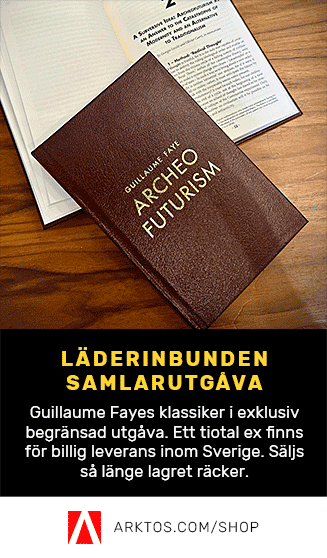Ernst Jünger lived between the years 1895 and 1998. As you all know he was a German writer. Personally I’d say that he was the greatest German novelist, essayist and diarist of the 20th century. In trying to portrait him you could look at some of his mentors and contemporaries.
Ernst Jünger was a German. And it’s no secret that he in some way or another was influenced by other German writers and thinkers. Below I elaborate on this. The survey is by no means complete. I’d say it’s just ”some informal remarks”.
1. Goethe
Ernst Jünger had some similarities with Johann Wolfgang von Goethe (1749-1832). Some would say that Goethe was Jüngers chief guru and inspiration. However, that’s a bit hard to prove since Jünger seldom or never even mentions Goethe by name in his works. The only passage I’ve detected is when Jünger quotes, in ”Eumeswil”, the Weimar Apollo’s ”nur was sich nie und nirgends hat begeben, das allein ist war” (”only that which hasn’t happened anywhere, is true”).
Now then, ”Eumeswil”. In this novel Jünger speaks a lot about the Urbild and other Plotinic dealings, about plants receiving their shape from a transcendent idea (= Urbild), and that’s kind of Goethean. Like Goethe Jünger was enchanted by nature, by plants and animals, and both had the esoteric terminology to express that.
2. Hugo Fischer
Hugo Fischer (1897-1975) was Jünger’s friend, at least before the Second World War. They shared an interest in idealistic philosophy, in nature observation and in seeing the traces of God in the creation. In Leipzig in the 20s they both studied philosophy, and in the 30s Fischer accompanied Jünger on a Norwegian trip (q.v. ”Myrdun”, 1943).
In that book Fischer’s alter ego is Der Doktor. In another Jünger book, ”Das abenteuerliche Herz”, Fischer is said to figure as Nigromantanus, an eccentric scholar with a house full of iridizing materials, Vexierbilder and metamorphosing decorations. I’d say that this Nigromontanus may be 30% Fischer; the rest of his persona is Jünger with a tinge of Goethe, the name ”Nigromontanus” being for example purloined from a Goethe text.
3. Spengler
Jünger was a free-form writer and novelist, Spengler on the other hand was a systemizer. Jünger dreamed about techno landscapes devoid of farmland, Spengler for his part was a devout farmer idolizer.
Oswald Spengler (1880-1936) once received a free copy of Jünger’s ”Der Arbeiter”. Spengler wrote and said that he wasn’t overly impressed. Why? Because Jünger had forgotten to lift the role of the farmer in his book. — On the farmer depends a nation’s welfare. That was Spengler’s view and Jünger’s vision wasn’t in sync with that.
That said, to me as a youngster, having read a Golo Mann’s essay about Germany in the 20s, the names of Spengler and Jünger almost seemed to merge. Writers writing about war, the decline of the west and all that, how alluring. Further on Jünger’s creed to me seemed more varied and balanced, however, the Spengler attitude has in some way affected me too. In ”The Decline of the West” and in his late ”Man and Technology” Spengler has a lot of interesting material, looking at things from a fresh perspective.
4. Walter Benjamin
If Jünger differs from Spengler in not being a common systemizer, then in Walter Benjamin Jünger has a kindred spirit. Looking at odd subjects, studying the modern world from abstruse angles (like in the ontology of shops, the metaphysics of stamps). Certain pages in ”Das abenteuerliche Herz” and Benjamin’s ”Einbahnstrasse” (1928) are very similar in spirit. Walter Benjamin’s (1892-1940) most famous work is”Die Passagenarbeit”, a study of 19th century Paris.
5. Nietzsche
Jünger didn’t quite like Friedrich Nietzsche (1844-1900). However, in his youth Jünger seems to have been affected by him. Maybe Jünger mellowed through the years and got fed up with the nihilism of Der Pulverkopf. Then again, Nietzsche, whether liked or disliked, is always there in Jünger’s works. He is referred to more or less directly in ”Heliopolis” and ”Eumeswil” for example.
6. C. G. Jung
Finally, a look at Carl Gustaf Jung (1875-1961). Jung contributed to Jünger’s and Eliade’s magazine Antaios. That said, I can’t trace the name ”Jung”, or references to his works, in Jünger’s books proper. However, Jung and Jünger were kindred spirits in that both were proficient in dreaming. They also preferred ancient authors to 20th century contemporaries. These Germans were both ”old in the land of dreams, myths and legends”…
Related
Jünger and the Craft of Science Fiction
Jünger: The Adventurous Heart (1938)
In Swedish: 20 frågor om Ernst Jünger
In Swedish: Nietzsche — glorifierad ateist
Schinkel’s Neue Wache (1816) in Berlin. This neoclassical building to me seems to symbolize ”enlightened Prussianism” and Jünger in a way was something like that, a Prussian with spiritual depth.












